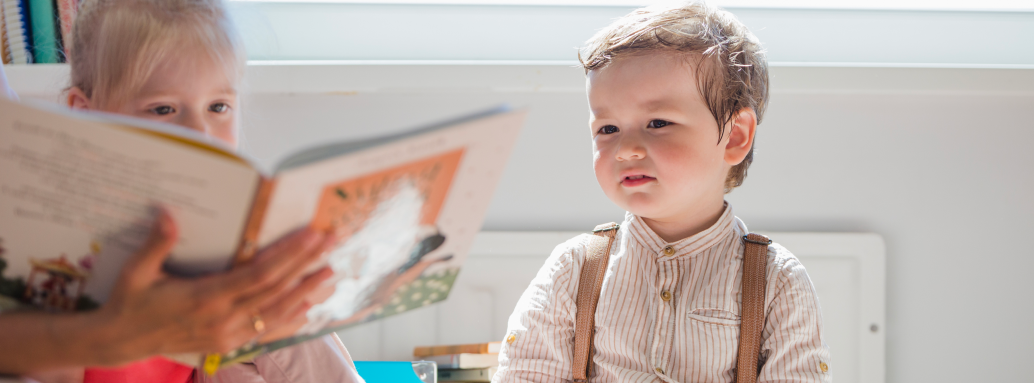Empowering childcare centres with tools to simplify operations and enhance outcomes
Automate payments, manage subsidies, and ensure financial accuracy with ease.
Effortless communication between families and educators for instant updates, messages, collaboration, and conversations.
Track, document, and celebrate every milestone in a child’s journey.
Simplify enrolment, manage waitlists, and track attendance effortlessly.
Streamline scheduling, performance tracking, and team communication.
Keep families informed with real-time updates and daily reports.
Discover how Parent can transform your childcare centre’s operations
Access a variety of tools, guides, and insights to help you get the most out of Parent
Stay updated with industry trends, expert advice, and childcare management tips.
See how childcare centers like yours achieved success with Parent.
Find quick answers to the most common questions about Parent's features and services.
Join live sessions or watch on-demand webinars for in-depth guidance and tips.
Get step-by-step support with articles, guides, and troubleshooting resources.


As parents, educators, and carers, we know young children are constantly exploring, questioning, and learning about their world. But there’s a deeper skill that allows them to navigate it with more confidence and capability: critical thinking.
Developing critical thinking skills in early learners goes beyond teaching kids to “think.” It’s about guiding them to analyze, evaluate, and make decisions independently—a toolkit that serves them for life. So, how do we nurture these essential skills in early childhood? Let’s dive in.
Critical thinking is the ability to think clearly and rationally, understanding the logical connection between ideas. For early learners, it’s about observing, questioning, and exploring ideas from multiple perspectives. At this age, fostering critical thinking doesn’t require complex theories but rather a focus on nurturing curiosity, problem-solving, and creativity in everyday activities.
Critical thinking plays a vital role in helping children understand the world around them. It empowers them to make informed decisions, solve problems, and ask questions that deepen their knowledge. Here are some benefits:
Critical thinking can be broken down into several core components, each of which can be developed through simple, engaging activities:
Children need to feel safe to experiment, ask questions, and make mistakes. A supportive classroom or learning space encourages children to try new things and fosters a sense of security that’s essential for critical thinking.
Open-ended questions like “What do you think will happen if…?” or “Why do you think that?” invite children to think deeply and articulate their thoughts. These questions are more valuable than yes-or-no queries because they engage children in reasoning and analysis.
Introduce games and activities that promote problem-solving. Puzzles, building blocks, and matching games are excellent ways to get children thinking critically. Encourage children to find multiple ways to solve a problem, showing them that there’s often more than one “right” answer.
Children learn by observing adults. When you face a problem, narrate your thought process. For example, say, “I’m trying to decide which story to read. This one has fun pictures, but that one is shorter. What do you think?”
Stories are a great way to stimulate critical thinking. Ask questions about characters’ motives, predict what might happen next, or explore alternative endings. Encourage children to connect story elements to their own lives, helping them analyze and relate to different perspectives.
Art activities and imaginative play allow children to explore their creativity, an important part of critical thinking. Provide materials and let them create without strict guidelines. This freedom encourages independent decision-making and problem-solving in a fun, engaging way.
After completing a task, encourage children to reflect on what they learned or could do differently next time. Reflection helps them become more aware of their own thinking processes, a key component of critical thinking.
Sorting activities help young children recognize patterns, an essential skill in logical reasoning. Try sorting toys by color, shape, or size, or sort items based on their function. Sorting helps kids learn to classify and organize information, building a foundation for critical thinking.
Blocks, LEGO, and other building toys encourage problem-solving. Ask children to build a structure and then think about how they can make it sturdier or taller. Challenges like these inspire children to think critically and experiment with cause-and-effect relationships.
Simple science activities, like mixing baking soda and vinegar, teach kids about hypothesis testing and observation. Ask them to predict what will happen, observe, and then discuss the results. Experiments help children engage with the scientific method—a natural pathway to critical thinking.
Pretend play scenarios encourage children to think from different perspectives. Ask them to imagine being a teacher, a doctor, or a shopkeeper. Role-playing promotes empathy and problem-solving, as kids navigate various social situations and responsibilities.
After reading a story, ask children to retell it in their own words or put events in order. Story sequencing enhances memory, comprehension, and the ability to organize thoughts—a precursor to critical thinking.
“What if” questions stimulate imagination and problem-solving. For instance, “What if it suddenly started raining inside?” or “What if the animals in the zoo could talk?” These scenarios allow children to think beyond reality, fostering creative critical thinking.
Instead of directing children with “Do this,” ask, “How do you think we should do this?” Encourage their input in small decisions around the house, like organizing their toys or choosing a recipe to bake together.
Activities like cooking, gardening, and fixing household items offer learning moments. Show them the process, ask questions, and let them explore. Real-world problem-solving is invaluable for developing critical thinking.
When mistakes happen, help children analyze what went wrong and how they can approach it differently next time. This teaches resilience and adaptability—two hallmarks of critical thinkers.
Critical thinking activities must be age-appropriate to avoid overwhelming children. Tailor activities to suit their developmental stage, focusing on fun, hands-on learning rather than abstract concepts.
Sometimes, children’s questions can be endless! Patience is key. Instead of trying to answer every “why,” encourage them to explore and find some answers independently. This autonomy is crucial for critical thinking.
Children might hesitate to think critically if they fear failure. Create a safe environment where mistakes are seen as learning opportunities, not setbacks. Encourage them to try different approaches, even if they don’t succeed every time.
While screen time should be limited, there are digital resources designed to develop critical thinking skills. Interactive games that focus on problem-solving, puzzles, and creative activities can supplement real-world learning.
When critical thinking skills are nurtured from a young age, they become a lifelong asset. Children grow into adults who can navigate complex situations, adapt to change, and approach challenges with resilience and insight. They learn to analyze situations, think independently, and express their ideas with confidence.
Teaching critical thinking to early learners isn’t about complicating their world—it’s about equipping them with tools to understand it. Encouraging curiosity, asking open-ended questions, and allowing them to explore give children the foundation for a lifetime of confident, independent thinking.
Nurturing critical thinking in young children is one of the most valuable gifts we can offer. This skill set is essential for future learning, problem-solving, and resilience. By incorporating these strategies into both school and home environments, we empower children to be thinkers, questioners, and explorers.
As we invest in their curiosity and creativity today, we’re building a generation that can approach the future with wisdom, confidence, and critical insight.
Why is critical thinking important in early childhood education?
Critical thinking helps children learn to analyze situations, solve problems, and make decisions independently. These skills build a foundation for lifelong learning, enabling kids to approach challenges with confidence and resilience. Early development of critical thinking also strengthens creativity, curiosity, and the ability to communicate ideas effectively.
How can parents encourage critical thinking at home?
Parents can foster critical thinking by encouraging open-ended questions, letting children make small decisions, and promoting hands-on learning activities like cooking, gardening, or building. Simple practices, like asking "What do you think will happen if...?" or encouraging kids to solve everyday problems, help children practice independent thinking.
What types of activities can develop critical thinking in young children?
Activities like sorting, building, science experiments, pretend play, and storytelling are great for developing critical thinking. These tasks encourage kids to observe, reason, and explore possibilities. For example, role-playing teaches empathy and problem-solving, while building blocks help with logical reasoning and spatial awareness.
How can teachers make critical thinking activities engaging for young children?
Teachers can make critical thinking activities engaging by creating a supportive and fun environment that encourages curiosity and exploration. Using hands-on materials, interactive games, and story-based scenarios can make critical thinking feel like play rather than work. Open-ended questions and creative challenges, like “What if” scenarios, help keep children engaged and curious.
How can critical thinking skills benefit children in the long term?
Children who develop critical thinking skills early are better equipped to navigate complex situations as they grow. They’re more adaptable, resilient, and capable of making thoughtful decisions. These skills also support academic success, social skills, and emotional intelligence, helping them approach challenges confidently and constructively throughout their lives.


